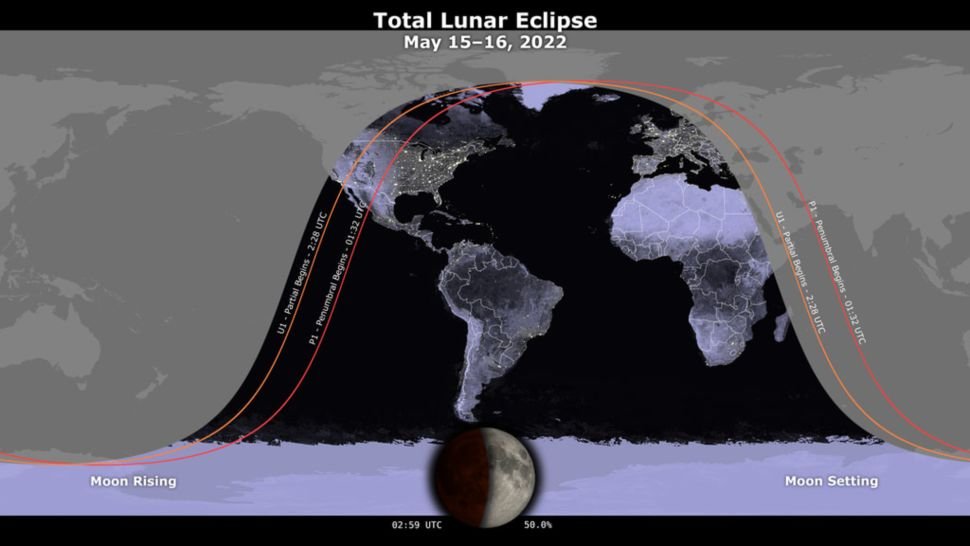11:45 AM | *Total lunar eclipse this Sunday night, May 15th…lingering aerosols from the Tonga volcanic eruption earlier this year could have an impact on the color*
Paul Dorian
Total lunar eclipse image from April 15, 2014 as seen from Tucson, Arizona. (Courtesy University of Arizona)
Overview
On the night of Sunday, May 15th, the moon will enter the Earth’s shadow creating a lunar eclipse, the first since May of 2021. If the weather is clear, the total lunar eclipse will be widely visible from the Americas on May 15th and in Africa/Europe on May 16th. There is a chance that lingering aerosols from the Tonga volcanic eruption in January of this year could actually turn the moon a darker shade of red compared to what we have seen in recent years.
Details
The eclipse begins when the moon enters the penumbra which is the part of the Earth’s shadow where the Sun is only partially covered by the Earth. The umbra is where the Sun is completely hidden. The Moon's appearance isn't affected much by the penumbra. The first glimpse of the penumbra may be seen as a faint “smudge” on the left part of the moon’s disk around 10:10 PM (EDT) on Sunday, the 15th. The real action begins when the Moon starts to disappear as it enters the umbra at about 10:28 PM. An hour later, when entirely within the umbra, the Moon usually takes on a coppery red color, but lingering aerosols from the Tonga volcanic eruption could make for a darker shade of red than normal.
A NASA visibility map for the May 15, 2022 total lunar eclipse. (Image credit: NASA's Scientific Visualization Studio)
At the moon's distance from Earth of 225,000 miles (362,100 km), the diameter of Earth's umbra is 5,800 miles (9,300 km), or 2.7 times the diameter of the moon so there will be no problem in getting the moon completely immersed in the umbra. Totality lasts for an hour and a half before the Moon begins to emerge from the central shadow. The moon is expected to take 3 hours, 27 minutes and 58 seconds to pass completely through the umbra with the last evidence of the penumbra around 2:12 AM EDT. Throughout the eclipse, the Moon is moving through the constellation Libra.
The total lunar eclipse of Jan. 20-21, 2019, captured by astrophotographers Imelda Joson and Edwin Aguirre from the suburbs of Boston. From left to right: The start of totality, at 11:41 p.m. EST on Jan. 20; the middle of totality, at 12:12 a.m. on Jan. 21; and the end of totality at 12:44 a.m. (Image credit: Imelda Joson/Edwin Aguirre)
The last total lunar eclipse occurred on May 26, 2021, with a very short (less than 16-minute) totality, visible primarily from Central and Western portions of North America. The last widely observable lunar eclipse visible from the Americas, dubbed the Super Blood Wolf Moon eclipse, happened on Jan. 20-21, 2019. There will be another total lunar eclipse widely visible over most of the Americas during the early morning hours of Nov. 8th.
One final note, in terms of the weather, unfortunately, a frontal system will be making a move on Sunday night from northwest-to-southeast across the Great Lakes and towards the Mid-Atlantic/Northeast US. As a result, there is the chance for clouds and showers on Sunday night and Monday which would, of course, diminish the chances of viewing the total lunar eclipse…still a few days away, however, and hopefully, this outlook can change.
Meteorologist Paul Dorian
Arcfield
arcfieldweather.com



